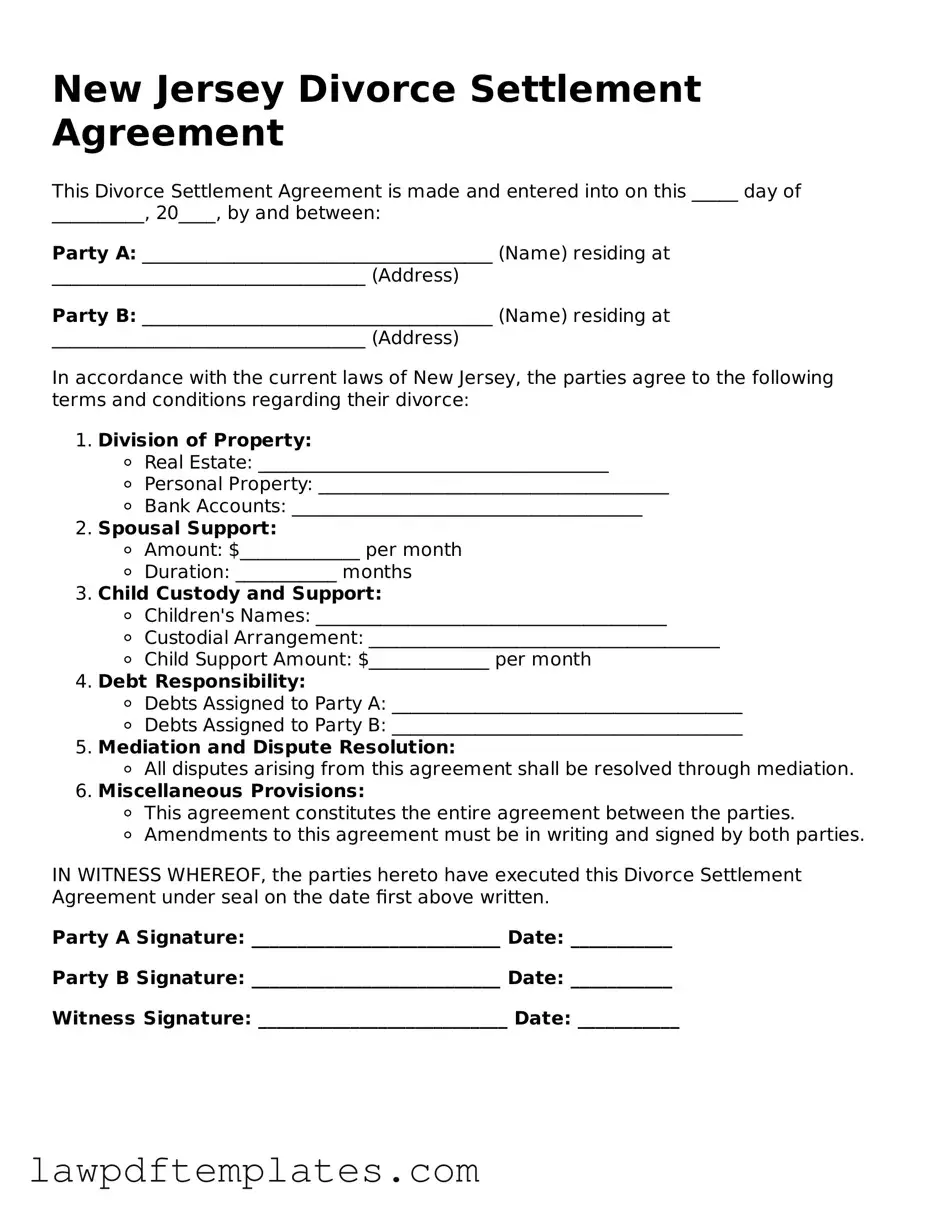New Jersey Divorce Settlement Agreement
This Divorce Settlement Agreement is made and entered into on this _____ day of __________, 20____, by and between:
Party A: ______________________________________ (Name) residing at __________________________________ (Address)
Party B: ______________________________________ (Name) residing at __________________________________ (Address)
In accordance with the current laws of New Jersey, the parties agree to the following terms and conditions regarding their divorce:
- Division of Property:
- Real Estate: ______________________________________
- Personal Property: ______________________________________
- Bank Accounts: ______________________________________
- Spousal Support:
- Amount: $_____________ per month
- Duration: ___________ months
- Child Custody and Support:
- Children's Names: ______________________________________
- Custodial Arrangement: ______________________________________
- Child Support Amount: $_____________ per month
- Debt Responsibility:
- Debts Assigned to Party A: ______________________________________
- Debts Assigned to Party B: ______________________________________
- Mediation and Dispute Resolution:
- All disputes arising from this agreement shall be resolved through mediation.
- Miscellaneous Provisions:
- This agreement constitutes the entire agreement between the parties.
- Amendments to this agreement must be in writing and signed by both parties.
IN WITNESS WHEREOF, the parties hereto have executed this Divorce Settlement Agreement under seal on the date first above written.
Party A Signature: ___________________________ Date: ___________
Party B Signature: ___________________________ Date: ___________
Witness Signature: ___________________________ Date: ___________
